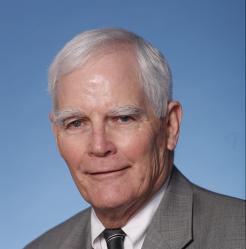Introduction
The bipartisan stimulus package enacted in February 2008 was, like most stimulus packages, a straightforward application of Keynesian fiscal policy: Spend your way out of recession. To the extent that recessions involve declines in consumption, convincing people to spend more money might prevent a recession or make a recession shorter and shallower than it might otherwise have been. Given that consumer spending comprises 70 percent of the nation’s GDP, stimulating consumer spending as an antidote to recession has face validity.
Thus, policymakers have long responded to evidence of an approaching recession by increasing government spending in ways designed to increase consumer spending. In fact, programs like unemployment insurance, food stamps, cash welfare, and a number of others are said to be automatically countercyclical because as a recession sets in people lose jobs and qualify for unemployment insurance and welfare. As a result, they have more money than they would have had without the government benefits and they are—given their financial condition—likely to spend it, thereby achieving the desired end of increasing economic activity.
On those unfortunate occasions when Congress is looking for ways to spend additional money to stimulate the economy and avoid recession, advocates concerned with the rise of inequality in America over the past two or three decades might wonder whether it would be possible to design a stimulus package that would also have the long-term effect of reducing inequality or— the other side of the same coin—increasing economic mobility. Personally, I’m skeptical about whether a stimulus package, even the stimulus package passed on a bipartisan basis in February, will achieve its major goal of getting the economy back on track, let alone killing two birds with one stone by simultaneously having an impact on inequality. Sending a $150 billion stimulus package out to boost a $14 trillion economy strikes me as tantamount to sending a tugboat into a hurricane to rescue an ocean liner. Even so, let’s ignore whether a stimulus package might actually stimulate something other than the federal deficit, and reflect on how stimulus packages differ from reforms designed to reduce inequality and promote mobility.
According to Doug Elmendorf and Jason Furman of the Brookings Institution, there is substantial agreement among economists that a good stimulus plan must be timely, targeted, and temporary. Timeliness is difficult to gauge. Policymakers want to boost the economy just as it is about to nosedive by boosting spending and consumption. But if we think we’re entering a recession and we’re not, stimulating the economy is inflationary. So the emergency spending both adds to the deficit and boosts inflation. But if policymakers wait too long, the spending package could come after the recession is already well under way or nearing its end. In either case, policymakers’ attempt to help the economy could increase both inflation and the deficit without producing much good.
Even if the timing is right, and Congress acts in timely fashion as it did earlier this year, the money must arrive quickly in the hands of people who will spend it. As Elmendorf and Furman put it, the targeting must be right. If the money—$1,200 for couples and $600 for individuals in the current case—is sent to middle class households, as more than half of it was under the current plan, the households may save a substantial fraction of the money or use it to pay off debt, thereby defeating the purpose of the stimulus. Similarly, the provision in the package allowing rapid expensing of equipment and thereby increasing the cash available to businesses does not come with a guarantee that businesses will spend the funds on new equipment or new hires. In large part, the economy is in the doldrums because of excessive borrowing for lousy investments, so there may be reason to question whether individuals or businesses will suddenly make sound investments—especially given that good investments are relatively difficult to find during a recession. Still, it must be granted, if many of the credit-constrained businesses use their savings to hire or make productive investments in equipment, there will be some economic boost.
Finally, a good stimulus package must be temporary. Historically, the American economy has been the most innovative and productive in the world, characteristics that most economists believe result in part from low taxes and decisions by risk-taking individuals and corporations who operate without major government interference. If a stimulus package gets the economy back on track, it is important to quickly restore the level of government spending and government interference in the economy to the status quo ante. In fact, under Keynesian theory, after the economy recovers the government should tax more than it spends to maintain fiscal balance. In any case, by sending out one-time checks, making income from the stimulus checks that is spent within two months tax free, and allowing one-time expensing of equipment, most of the spending in the stimulus package meets the criterion of being temporary.


